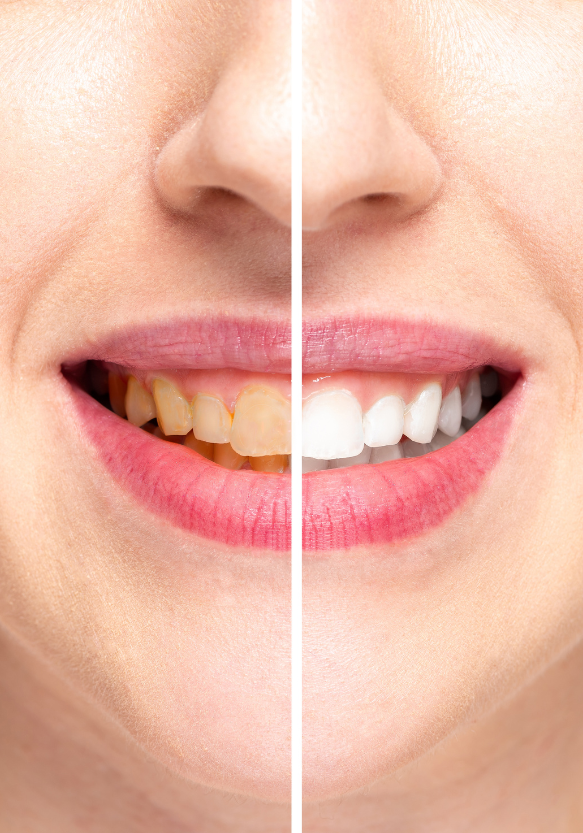How to Prevent Tooth Discoloration and Keep Your Smile Bright
A bright, white smile is something many people strive for, but tooth discoloration can make that goal feel out of reach. It’s frustrating to notice that your teeth don’t look as vibrant as they once did, even if you have the best dental hygiene possible. Understanding what causes discoloration is the first step toward prevention. Tooth discoloration can stem from a variety of factors, including lifestyle choices, aging, and even certain health conditions. The good news is that in most cases you can treat or even prevent tooth discoloration with the right habits and dental care.

Why Teeth Become Discolored
Tooth discoloration happens when stains accumulate on the surface of the enamel or when changes occur in the inner structure of the tooth. There are two main types of discoloration: extrinsic and intrinsic. Extrinsic discoloration affects the outer layer of the teeth and is usually caused by external factors, such as what you eat and drink. Coffee, tea, red wine, and dark-colored sodas are notorious culprits. Foods like berries or tomato-based sauces can also leave stains behind, as can tobacco products.
Intrinsic discoloration, on the other hand, originates inside the tooth and can be trickier to address. This type of discoloration can be caused by factors like trauma to a tooth, certain medications, or excessive fluoride exposure during childhood. Aging is another contributor, as the enamel naturally wears down over time, allowing the yellowish dentin layer beneath it to show through.
The Role of Lifestyle in Tooth Discoloration
Your daily habits play a significant role in the color of your teeth. Drinks like coffee, tea, and wine contain pigments called chromogens that cling to enamel and create stains over time. Smoking or chewing tobacco introduces tar and nicotine, which are known to cause yellow or brown stains. Even habits like poor oral hygiene can make discoloration worse, as plaque and tartar buildup create a rough surface where stains can easily stick.
If you have a diet that’s high in acidic foods or drinks, you might also notice your teeth becoming discolored more quickly. Acid wears away enamel, which makes teeth more vulnerable to stains and discoloration. Additionally, not brushing and flossing regularly allows surface stains to set in, making it harder to maintain a bright smile.
Health and Genetic Factors
Sometimes, tooth discoloration isn’t entirely within your control. Certain health conditions, such as those that affect enamel development, can cause discoloration from an early age. Genetic factors may also play a role, as some people are born with naturally thicker or thinner enamel. Thinner enamel can make teeth appear more yellow because the underlying dentin is more visible.
Certain medications, like tetracycline antibiotics or antihistamines, can also lead to intrinsic discoloration, particularly if taken during childhood when teeth are still developing. Additionally, chemotherapy and radiation treatments for cancer can discolor teeth. While these factors may be unavoidable, they highlight the importance of maintaining good oral hygiene and consulting with your dentist about preventative measures.
How to Prevent Tooth Discoloration
The best way to prevent tooth discoloration is to establish healthy dental habits and make mindful choices about your lifestyle. Brushing your teeth at least twice a day and flossing daily help remove surface stains and prevent plaque buildup. Using a toothpaste specifically designed for whitening can also help keep your enamel looking bright. Regular visits to your dentist for professional cleanings ensure that any lingering stains or tartar are removed before they become permanent.
It’s also important to be mindful of what you consume. Limiting your intake of staining beverages like coffee and red wine or using a straw to drink them can reduce their contact with your teeth. Rinsing your mouth with water after eating or drinking stain-causing foods can also help. For smokers, quitting tobacco is one of the most impactful steps you can take—not only for your teeth but for your overall health.
In cases where discoloration is caused by factors like medications or genetics, professional whitening treatments or veneers may be the best option. Your dentist can guide you through these options and recommend the right solution for your individual needs.
When to Seek Professional Help
While many cases of discoloration can be improved with good oral hygiene and lifestyle adjustments, some stains require professional intervention. If you’ve noticed significant changes in the color of your teeth or if over-the-counter whitening products haven’t worked, it may be time to visit your dentist. They can determine whether your discoloration is extrinsic or intrinsic and suggest treatments that will deliver the best results.
Professional whitening treatments are highly effective for extrinsic stains and can often restore teeth to their natural brightness in just one or two sessions. For intrinsic discoloration, options like veneers or bonding may be recommended to mask the darker areas. In either case, seeking help from your dentist ensures that you’ll get a solution tailored to your unique situation.
Tooth discoloration is a common issue, but it’s one that you don’t have to live with. By understanding the causes of discoloration and taking steps to prevent it, you can maintain a brighter, healthier smile for years to come. And when lifestyle changes and home remedies aren’t enough, your dentist is there to help with advanced treatments that restore confidence in your smile.
If you’re struggling with tooth discoloration or want to learn more about how to keep your teeth looking their best, don’t hesitate to schedule a visit with the professionals here at our office. Together, we can create a plan to protect your teeth and enjoy the benefits of a brighter, healthier smile!
